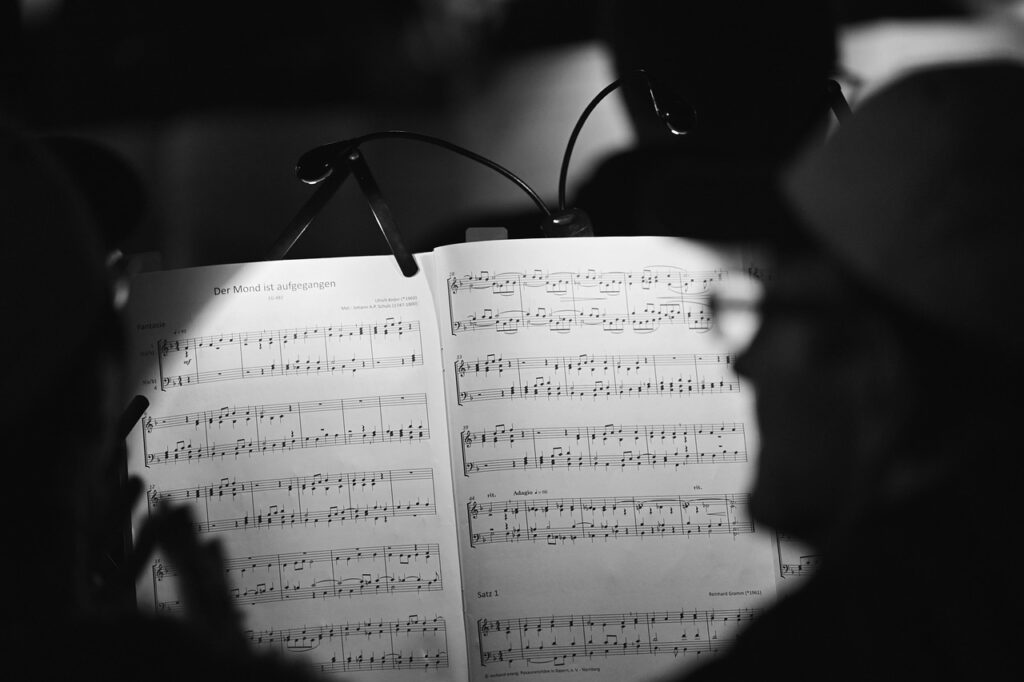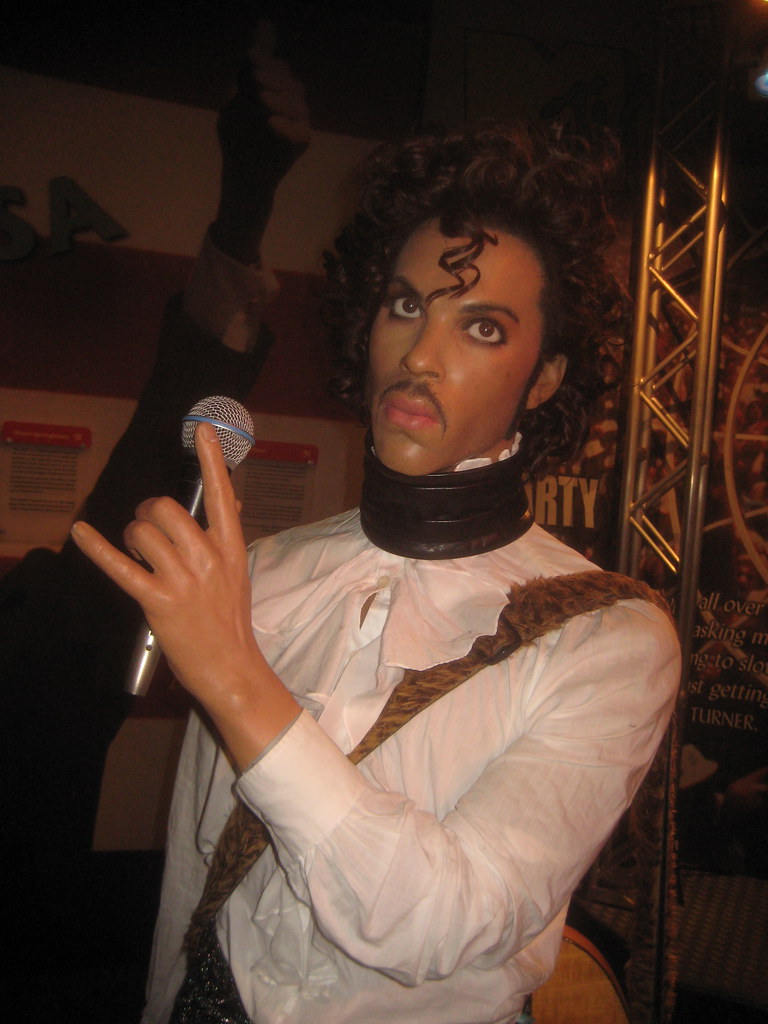
Prince Rogers Nelson, born on June 7, 1958, in Minneapolis, transcended the conventional definitions of a musician. Hailed by Billboard magazine as “the greatest musical talent of his generation,” his career was a relentless pursuit of artistic innovation, marked by an unparalleled blend of musical styles, a flamboyant androgynous persona, and a prodigious capacity for creation. This article embarks on an in-depth examination of the early life and foundational career milestones of an artist who not only shaped the sound of popular music but also redefined the economics and control of an artist’s output in the modern era. His influence, both artistic and commercial, remains a cornerstone of contemporary music history, inspiring generations.
Prince’s unique sonic fingerprint, often referred to as the “Minneapolis sound,” was a testament to his versatility as a multi-instrumentalist who frequently performed all or most instruments on his recordings. His genre-defying music seamlessly incorporated funk, disco, R&B, rock, new wave, soul, synth-pop, pop, jazz, blues, and hip hop, creating a body of work that was both eclectic and distinct. This comprehensive analysis, presented in the authoritative style of Forbes, delves into the factual underpinnings of his ascent, charting his significant albums, tour successes, and pivotal business decisions that underscored his journey to becoming a global icon.
From his earliest recordings to the monumental success of projects like *Purple Rain*, Prince navigated the complexities of the music industry with a singular vision. We will meticulously track the quantifiable successes—record sales, chart positions, and financial milestones—that cemented his status as one of the best-selling music artists of all time. This retrospective aims to illuminate the strategic artistic choices and the sheer volume of his output that defined the initial phases of his extraordinary career, laying the groundwork for a legacy that continues to resonate globally.

1. **Early Life and Musical Awakening**
Prince Rogers Nelson’s journey began in Minneapolis on June 7, 1958, born to jazz singer Mattie Della and pianist/songwriter John Lewis Nelson. He was named after his father’s stage name, Prince Rogers, used during performances with his mother in the jazz group the Prince Rogers Trio. Despite his illustrious name, Prince harbored a preference for being called “Skipper” during his childhood, a name that stuck, revealing an early hint of his distinctive character. The musical genes from both parents provided a fertile ground for his nascent talent, fostering an environment where music was not just heard but lived.
Early life presented its challenges for the young Prince; he candidly stated he was “born epileptic” and experienced seizures. A poignant moment in his youth, recounted by his mother, involved Prince declaring, “Mom, I’m not going to be sick anymore,” attributing his newfound resolve to an angelic encounter. This early spiritual experience offers a glimpse into the profound personal dimensions that would often inform his later artistic expressions and philosophical outlook. Such moments underscore the depth beneath the flamboyant exterior that would later captivate millions.
His innate musicality manifested early, as he composed his first song, “Funk Machine,” on his father’s piano at the tender age of seven. Following his parents’ divorce when he was 10, Prince experienced a somewhat tumultuous adolescence, moving between his father’s and his mother’s homes. A significant influence during this period was his stepfather, Hayward Baker, who introduced him to the electrifying live performances of James Brown. Baker is also credited with improving the family’s financial situation, providing a degree of stability that allowed Prince’s musical pursuits to flourish. These formative experiences, blending hardship with pivotal inspirations, sculpted the young artist’s burgeoning creativity.
After a brief stint with his father, who gifted him his first guitar, Prince found a new home in the basement of the neighboring Anderson family. There, he forged a crucial friendship with Andre Anderson, who would later become known as André Cymone and a key collaborator in Prince’s early career. His academic years at Bryant Junior High saw him testing the original *The Oregon Trail* video game, while at Central High School, he displayed a broad range of talents, participating in football, basketball, and baseball. Further diversifying his artistic foundation, Prince trained in classical ballet at the Minnesota Dance Theatre through the Urban Arts Program, a discipline that would later inform his stage presence and lead to his philanthropic efforts in saving the Joffrey Ballet in Chicago during the 1990s. This early exposure to various art forms and friendships laid the groundwork for his future multidisciplinary genius.
Read more about: Beyond the Red Carpet: 15 Celebrities Who Secretly Traded Fame for Fulfilling ‘Normal’ Lives After Retirement

2. **First Albums and Early Critical Acclaim**
Prince’s professional journey commenced in 1975 when he contributed guitar tracks to Pepe Willie’s band 94 East, even co-writing the song “Just Another Sucker.” By 1976, fresh out of Central High School, he had created a demo tape with producer Chris Moon, a pivotal step that led him to Minneapolis businessman Owen Husney. Husney, recognizing Prince’s raw talent, signed him to a management contract and facilitated the creation of a polished demo at Sound 80 Studios. This early strategic move, coupled with a professionally produced press kit, generated significant interest from major record labels including Warner Bros. Records, A&M Records, and Columbia Records.
In 1977, at the age of 18, Prince signed a landmark recording contract with Warner Bros. Records, notably securing an unprecedented level of creative control for his first three albums and retaining his publishing rights. This crucial agreement, brokered by Husney, enabled Prince to move to Sausalito, California, where he recorded his debut album, *For You*. Released on April 7, 1978, the album’s liner notes proudly declared that Prince wrote, produced, arranged, composed, and played all 27 instruments, with the sole exception of co-writing “Soft and Wet” with Moon. The recording costs for *For You* notably exceeded his initial advance, underscoring his commitment to his artistic vision from the outset. Commercially, “Soft and Wet” reached No. 12 on the Hot Soul Singles chart and No. 92 on the Billboard Hot 100, while “Just as Long as We’re Together” reached No. 91 on the Hot Soul Singles chart, marking his initial foray into the mainstream.
The year 1979 saw Prince formalize his backing band, featuring André Cymone on bass, Dez Dickerson on guitar, Gayle Chapman and Doctor Fink on keyboards, and Bobby Z. on drums. Their inaugural performance at the Capri Theater on January 5, 1979, was attended by Warner Bros. executives, who, while recognizing his potential, felt more development was needed. However, the subsequent release of his self-titled album, *Prince*, in October 1979, proved to be a commercial breakthrough. It climbed to No. 4 on the Billboard Top R&B/Black Albums charts and No. 22 on the Billboard 200, achieving platinum status. The album spawned two R&B hits: “Why You Wanna Treat Me So Bad?” and “I Wanna Be Your Lover,” which sold over a million copies, reaching No. 11 on the Billboard Hot 100 and securing the No. 1 spot for two weeks on the Hot Soul Singles chart, establishing his growing commercial viability.
Prince’s artistic evolution continued rapidly into the 1980s. His album *Dirty Mind* (1980) was a bold statement, described by Stephen Thomas Erlewine as a “stunning, audacious amalgam of funk, new wave, R&B, and pop, fueled by grinningly salacious sex and the desire to shock.” Recorded in his own studio, this gold-certified album featured explicit content in tracks like the title song, “Head,” and “Sister.” The single “Uptown” reached No. 5 on both the Billboard Dance chart and the Hot Soul Singles chart. Following a February 1981 appearance on *Saturday Night Live*, he released *Controversy* in October 1981. This period also saw the introduction of his distinctive abbreviated spelling in song titles and liner notes. Although his stint as an opening act for the Rolling Stones in 1981 was met with hostility, it highlighted his provocative stage presence and refusal to conform. Furthermore, 1981 marked the formation of his influential side project, The Time, for whom he wrote and performed most of the instrumentation under pseudonyms, further showcasing his prolific and entrepreneurial spirit.
This early creative burst culminated in the release of the double album *1999* in late 1982, which became a commercial juggernaut, selling over four million copies. The title track, a protest against nuclear proliferation, became his first top 10 hit outside the US. Crucially, “Little Red Corvette” alongside Michael Jackson’s “Billie Jean” broke racial barriers by becoming one of the first two videos by Black artists to receive heavy rotation on MTV. This move fundamentally shifted the landscape of music television. The album also featured the top ten hit “Delirious” and earned Prince his first Grammy Award nomination for “International Lover” at the 26th Annual Grammy Awards. This period solidified his standing as not just a critical darling but a potent commercial force capable of challenging industry norms.
Read more about: Remember Them? 10 Iconic Child Stars Who Left Hollywood For Totally Unexpected Lives
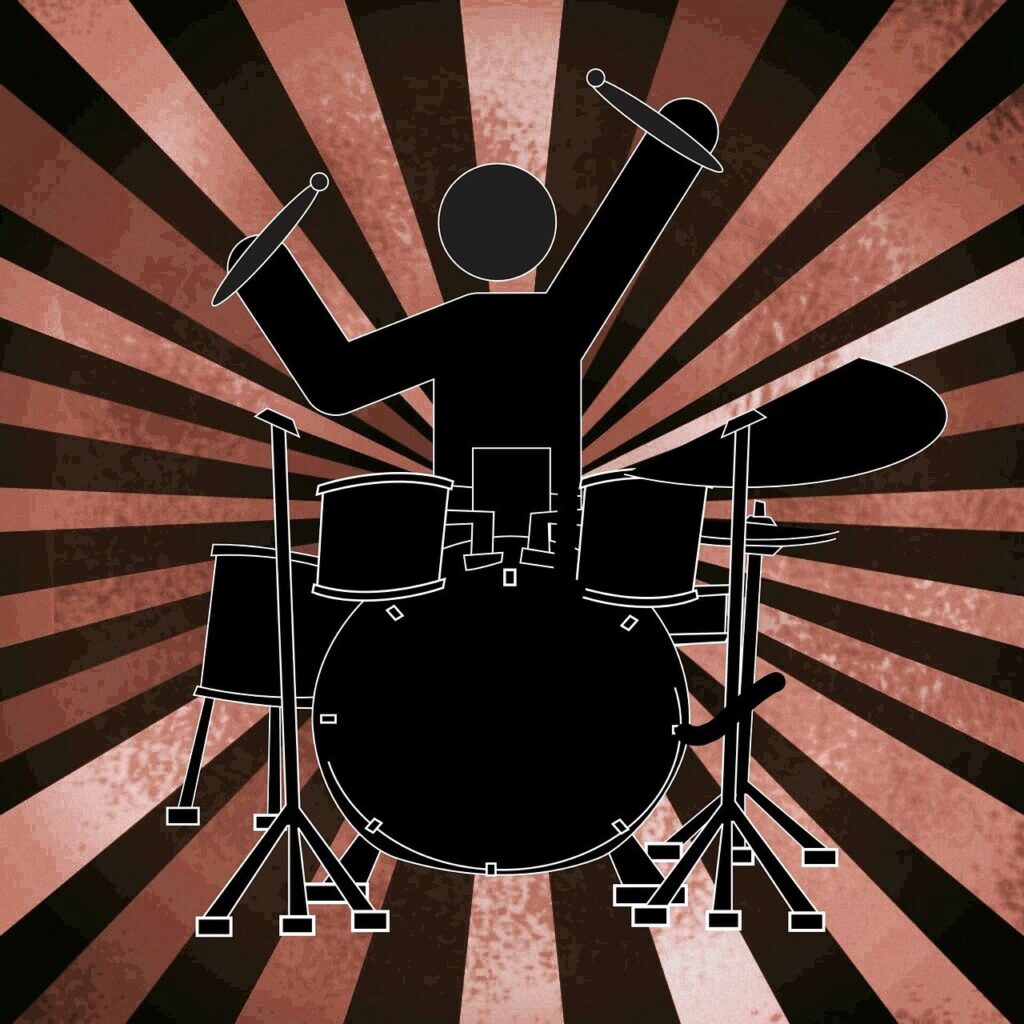
3. **The *Purple Rain* Phenomenon: Film, Album, and Global Stardom**
Leading into this transformative era, Prince had begun referring to his backing ensemble as The Revolution, a name subtly embedded in reverse on the cover of his *1999* album. This band, comprising Lisa Coleman and Doctor Fink on keyboards, Bobby Z. on drums, Brown Mark on bass, and Dez Dickerson on guitar, with Jill Jones as a backing singer, was initially used sparingly in the studio. Following the *1999* Tour, Dickerson’s departure for religious reasons and a reluctance to sign a long-term contract led to the introduction of Wendy Melvoin, a friend of Lisa Coleman, further evolving the band’s dynamic. The Revolution’s role in Prince’s studio work gradually expanded throughout 1983, setting the stage for an unprecedented fusion of music and cinema.
According to his former manager Bob Cavallo, in the early 1980s, Prince insisted on securing a deal for a major motion picture, a bold move given his then-limited mainstream exposure to pop and R&B hits. This ambitious demand culminated in the creation of the hit film *Purple Rain* (1984), a loosely autobiographical narrative starring Prince himself. The accompanying eponymous studio album, which served as the film’s soundtrack, catapulted Prince into an stratosphere of global stardom, marking a pivotal moment in his career and popular culture at large. It was a testament to his unwavering artistic vision and entrepreneurial drive.
The commercial success of the *Purple Rain* album was nothing short of phenomenal. It sold over 13 million copies in the US alone and dominated the US Billboard 200 chart for an astounding 24 consecutive weeks, cementing its status as a monumental achievement in music history. The film itself was a significant financial success, grossing more than $68 million in the US, an impressive figure that translates to approximately $206 million in 2024 dollars. This dual triumph earned Prince an Academy Award for Best Original Song Score, a rare accolade for a contemporary music artist, demonstrating the profound cultural resonance of the project and its unparalleled impact across both music and film industries.
The album produced a string of chart-topping singles that became synonymous with Prince’s sound. “When Doves Cry” and “Let’s Go Crazy” both reached No. 1 on the Billboard Hot 100, with “When Doves Cry” becoming a signature song. The iconic title track, “Purple Rain,” peaked at No. 2. In an extraordinary feat in 1984, Prince simultaneously held the No. 1 album, single, and film in the US—a historic achievement that no other singer had accomplished before. The enduring critical acclaim is evident in its ranking as 8th in Rolling Stone’s “500 Greatest Albums of All Time” and its inclusion on Time magazine’s “All-Time 100 Albums” list. Furthermore, the album garnered Prince two of his first three Grammy Awards at the 27th Annual Grammy Awards: Best Rock Performance by a Duo or Group with Vocal and Best Score Soundtrack for Visual Media, underscoring its multifaceted brilliance and commercial dominance.
The *Purple Rain* phenomenon extended beyond music and film, leaving an indelible mark on broader cultural landscapes. Pop artist Andy Warhol, fascinated by Prince, created the painting *Orange Prince* in 1984, one of twelve unique portraits that captured the musician’s iconic image. Warhol’s portrait was featured in Vanity Fair, accompanying an article that hailed Prince “at the height of his powers,” coinciding with the launch of the 98-date Purple Rain Tour and solidifying his global media presence. Moreover, the album inadvertently sparked a significant social debate when Tipper Gore founded the Parents Music Resource Center (PMRC) after her daughter listened to Prince’s sexually explicit song “Darling Nikki.” The PMRC’s advocacy ultimately led to the recording industry’s voluntary adoption of the “Parental Advisory: Explicit Lyrics” warning label, a lasting legacy of Prince’s willingness to push societal boundaries in his art.
4. **Artistic Evolution Post-*Purple Rain*: *Around the World in a Day* and *Parade***
In the immediate aftermath of his unprecedented *Purple Rain* success, Prince made a surprising announcement: he intended to discontinue live performances and music videos after the release of his next album. This declaration underscored his unpredictable artistic temperament and his continuous drive to innovate rather than replicate past successes. This period saw Prince exploring new sonic territories and experimenting with his public persona, rather than resting on the commercial laurels of his most famous work, reflecting a Forbes-esque commitment to evolving his brand and output.
His subsequent recording, *Around the World in a Day* (1985), proved that his audience remained loyal and eager for his new directions. The album commanded the No. 1 spot on the Billboard 200 for three consecutive weeks, demonstrating sustained commercial prowess. From this album, the single “Raspberry Beret” climbed to No. 2 on the Billboard Hot 100, while “Pop Life” reached No. 7, further solidifying his consistent ability to produce commercially successful hits across evolving musical styles. This success, coming directly after a monumental peak, confirmed his enduring appeal and the market’s receptiveness to his artistic shifts.
In 1986, Prince released the album *Parade*, which reached No. 3 on the Billboard 200 and No. 2 on the R&B charts. This album served as the soundtrack for his second film, *Under the Cherry Moon*, which Prince not only starred in but also directed, further expanding his cinematic endeavors. The lead single from *Parade*, “Kiss,” became another massive hit, reaching No. 1 on the Billboard Hot 100. Interestingly, “Kiss” was originally conceived for a side project called Mazarati, showcasing Prince’s prolific songwriting and his willingness to allocate material to various creative outlets. That same year, Prince’s songwriting prowess was evident again when “Manic Monday,” a song he penned and was recorded by The Bangles, reached No. 2 on the Hot 100 chart, highlighting his significant influence as a composer for other artists.
Despite the commercial success of the *Parade* album, which went platinum and sold two million copies, *Under the Cherry Moon* received a harsh critical reception. The film garnered Golden Raspberry Awards for Worst Picture (tied with *Howard the Duck*), and Prince himself was awarded for Worst Director, Worst Actor, and Worst Original Song for “Love or Money.” However, in a testament to the complex nature of artistic legacies, some critics later re-evaluated *Under the Cherry Moon* after Prince’s death, elevating it to cult classic status and drawing comparisons to revered films like *8½* and *Casablanca*. Following the *Parade* tour, Prince made the significant decision to disband The Revolution and brought in new band members, including Miko Weaver on guitar, Atlanta Bliss on trumpet, and Eric Leeds on saxophone, signifying another major artistic recalibration.
5. **Disbanding The Revolution and the *Sign o’ the Times* Masterpiece**
Before the official disbandment of The Revolution, Prince was immersed in two distinct projects: *Dream Factory*, a collaborative album with The Revolution members featuring their input and lead vocals, and *Camille*, a solo endeavor that introduced a new, enigmatic, androgynous persona, primarily characterized by sped-up, female-sounding vocals. These parallel creative explorations demonstrated Prince’s boundless inventiveness and his constant desire to push his artistic boundaries. The breadth of these projects hinted at the extraordinary output that was to come, showcasing a creative engine operating at peak capacity.
With the dismissal of The Revolution, Prince embarked on consolidating material from these two shelved albums, augmenting them with new compositions, into an ambitious three-LP set initially titled *Crystal Ball*. This grand vision, however, encountered resistance from Warner Bros., who, citing commercial concerns, compelled Prince to trim the project down to a double album. The result was *Sign o’ the Times*, which was released on March 31, 1987. This compromise, while frustrating for Prince, inadvertently led to the creation of what many critics would universally hail as the greatest work of his career, a testament to his ability to distill genius even under corporate pressure.
*Sign o’ the Times* received widespread critical acclaim, peaking at No. 6 on the Billboard 200 albums chart and being named the top album of the year by the prestigious Pazz & Jop critics’ poll. It achieved significant commercial success, selling 3.2 million copies, underscoring its broad appeal. The album’s profound impact was not limited to the United States; it performed exceptionally well in Europe, prompting Prince to embark on a lengthy and successful overseas tour to promote the album. This period demonstrated Prince’s ability to maintain critical and commercial relevance even as he navigated significant internal artistic shifts and external corporate demands, further solidifying his unparalleled position in the global music market.
The album spawned several highly successful singles that showcased its diverse sonic palette. The socio-politically charged title track, “Sign o’ the Times,” charted at No. 3 on the Hot 100. The follow-up, “If I Was Your Girlfriend,” while charting at No. 67 on the Hot 100, climbed to No. 12 on the R&B chart. A memorable duet with Sheena Easton, “U Got the Look,” soared to No. 2 on the Hot 100 and No. 11 on the R&B chart. The final single, “I Could Never Take the Place of Your Man,” reached No. 10 on the Hot 100 and No. 14 on the R&B chart, ensuring the album’s sustained commercial presence. For the supporting tour, Prince assembled a new backing band, integrating remnants of The Revolution with fresh talent like bassist Levi Seacer Jr. and drummer Sheila E., alongside dancer/choreographer Cat Glover, creating a dynamic new live performance unit.

6. **The Controversial *Black Album* and the Spiritual *Lovesexy***
In a dramatic turn, following the critical triumph of *Sign o’ the Times*, Prince prepared to release *The Black Album*. This record marked a departure, being more instrumental, funk- and R&B-themed, and notably experimenting with hip hop on tracks such as “Bob George” and “Dead on It.” Its intended release was shrouded in minimalist mystery, with a monochromatic black cover and only a catalog number. However, after approximately 500,000 copies had already been pressed, Prince experienced a profound “spiritual epiphany,” leading him to believe the album was evil and orchestrating its unprecedented recall. This extraordinary decision highlighted his deeply personal and often spiritual relationship with his art, prioritizing artistic and moral conviction over commercial gain.
The *Black Album* eventually saw a limited official release by Warner Bros. in 1994, seven years after its initial recording. Its delayed and cult-like status further cemented its mystique and provided a glimpse into Prince’s uncompromising creative process and his complex relationship with his record label. The incident became an infamous tale in music industry lore, emphasizing Prince’s unique position of power and his willingness to defy conventional business practices for artistic integrity, a testament to his entrepreneurial spirit in controlling his artistic output, even if it meant foregoing significant revenue.
Responding to the perceived darkness of *The Black Album*, Prince swiftly returned to the studio for an intensive eight-week recording session, resulting in *Lovesexy*. Released on May 10, 1988, *Lovesexy* was conceptualized as a spiritual opposite, imbued with themes of positivity and love. With the exception of “Eye No,” which featured his backing band, every song on the album was a solo effort by Prince, showcasing his prolific individual artistry. *Lovesexy* reached No. 11 on the Billboard 200 and No. 5 on the R&B albums chart, demonstrating his continued ability to command a substantial audience. The lead single, “Alphabet St.,” peaked at No. 8 on the Hot 100 and No. 3 on the R&B chart, selling 750,000 copies and reaffirming his chart-topping prowess.
Following the album’s release, Prince embarked on the ambitious Lovesexy World Tour, a three-leg, 84-show spectacle with his post-Revolution backing band. While the performances were met with immense enthusiasm by huge crowds, the tour, despite its artistic success, ultimately failed to generate a net profit. This financial outcome was attributed to the extraordinarily expensive sets and elaborate props required for the production. This period vividly illustrated the constant tension between Prince’s expansive artistic vision and the commercial realities of large-scale touring, a business challenge many high-profile artists face when balancing creativity with fiscal viability.

7. **Soundtracking Blockbusters: *Batman* and *Graffiti Bridge***
In 1989, Prince’s influence subtly extended to another pop icon, Madonna, as he contributed significantly to her studio album *Like a Prayer*. He co-wrote and performed the duet “Love Song” and, notably, played uncredited electric guitar on several other tracks, including the title song, “Keep It Together,” and “Act of Contrition.” This collaboration underscored Prince’s broad reach and his quiet but powerful presence within the music industry, showcasing his talent as a sought-after collaborator even while maintaining his own prolific output.
A major commercial opportunity arose when *Batman* (1989) director Tim Burton personally requested Prince to record songs for the upcoming live-action adaptation. Prince seized the opportunity, producing an entire nine-track album which Warner Bros. released on June 20, 1989. The *Batman* soundtrack proved to be a colossal success, peaking at No. 1 on the Billboard 200 and selling 4.3 million copies. The album’s lead single, “Batdance,” topped both the Billboard Hot 100 and R&B charts, a testament to Prince’s ability to merge his distinctive sound with a blockbuster franchise and achieve immense popular appeal.
However, the contractual terms of the *Batman* soundtrack deal revealed an ongoing tension in Prince’s career: he was required to sign away all publishing rights to the songs on the album to Warner Bros. as part of the agreement. This detail is crucial in understanding the future contractual disputes that would characterize Prince’s relationship with his label, as it highlights his desire for greater artistic and financial control over his creations. Despite this, the soundtrack also featured other successful singles, including “The Arms of Orion” (with Sheena Easton), “Partyman” (featuring Anna Fantastic), and the love ballad “Scandalous!”, all charting well and demonstrating his commercial versatility.
In 1990, Prince embarked on the “Nude Tour,” featuring a revamped band, a return to a “greatest hits” setlist, and a more streamlined production designed for financial success. This European and Japanese tour proved fiscally rewarding, demonstrating his ability to adapt his touring strategy for optimal returns. As the year progressed, Prince completed production on his fourth film, *Graffiti Bridge* (1990), positioned as a sequel to *Purple Rain* and featuring original members of The Time. Despite these promising elements and the accompanying album reaching No. 6 on both the Billboard 200 and R&B charts—with the single “Thieves in the Temple” topping the R&B chart—the film was a box-office flop, grossing only $4.2 million. This marked a period of artistic transition, as the last remaining members of The Revolution, Miko Weaver and Doctor Fink, departed Prince’s band following the film and album’s release, signaling the end of one era and the imminent beginning of another.
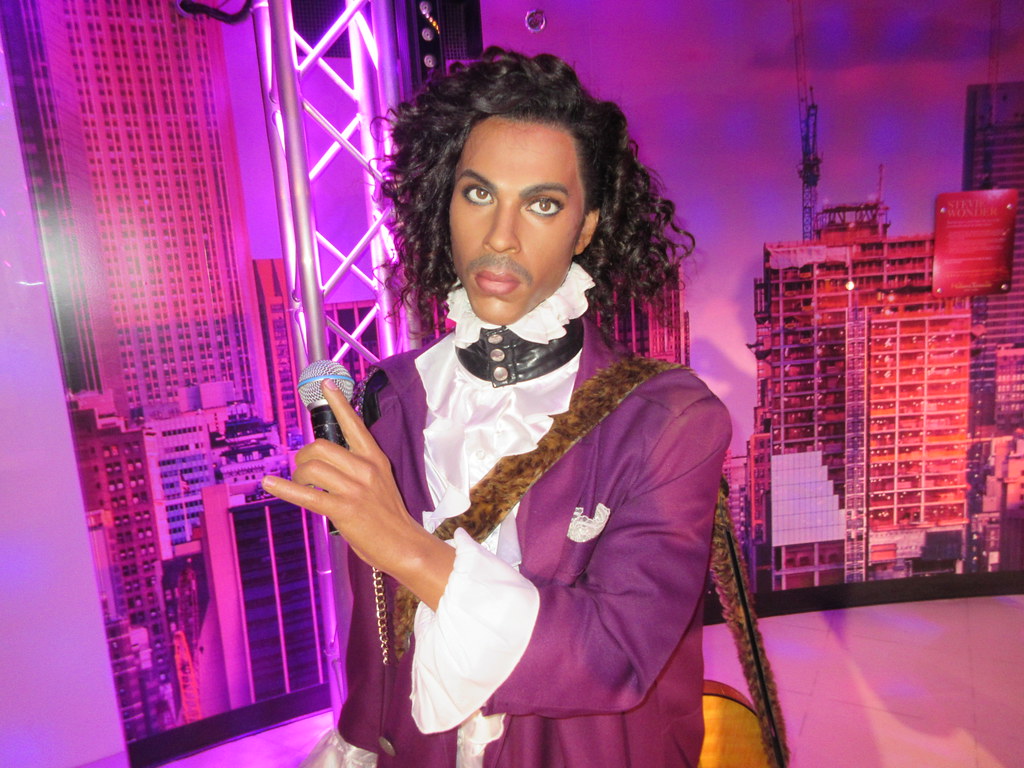
8. **The New Power Generation: A Fresh Collaborative Chapter**
1991 marked a pivotal moment in Prince’s evolving sound as he introduced his new backing band, the New Power Generation, often referred to as the NPG. This lineup saw significant changes from his previous ensembles, with the departure of long-time collaborators like guitarist Miko Weaver and keyboardist Doctor Fink. Prince brought in fresh talent, including bass player Sonny T., Tommy Barbarella on keyboards, and a dynamic brass section known as the Hornheads, who joined existing members Levi Seacer (transitioning to guitar), Rosie Gaines, Michael Bland, and the dancing trio the Game Boyz. This new configuration heralded a more collaborative approach to his music, influencing the direction of his forthcoming projects and expanding his live performance capabilities.
With substantial input from these new band members, Prince released *Diamonds and Pearls* on October 1, 1991. The album quickly proved to be a commercial success, reaching an impressive No. 3 on the Billboard 200 album chart, solidifying his continued mainstream appeal. The record spawned four hit singles in the United States, each demonstrating Prince’s versatility and enduring ability to craft chart-topping tracks. ‘Gett Off’ peaked at No. 21 on the Hot 100 and No. 6 on the R&B charts, while ‘Cream’ became his fifth US No. 1 single, a testament to his sustained pop dominance. The title track, ‘Diamonds and Pearls,’ also achieved significant success, reaching No. 3 on the Hot 100 and claiming the top spot on the R&B charts, with ‘Money Don’t Matter 2 Night’ peaking at No. 23 and No. 14 on the Hot 100 and R&B charts, respectively.
Beyond its chart success, *Diamonds and Pearls* was a major commercial triumph, selling more than 2 million copies in the United States alone. Its success prompted Warner Bros. to renew Prince’s contract in 1992, reportedly securing a staggering $100 million deal for him to release six more albums with the label. Following this significant renewal, Prince released his 14th studio album, and the second to feature the New Power Generation. This album was distinctively titled, bearing only an unpronounceable symbol on its cover—later copyrighted as ‘Love Symbol #2’—which was explained as a creative amalgamation of the male (♂) and female (♀) symbols, reflecting his ongoing exploration of identity and gender.
While the album, retrospectively referred to as *Love Symbol*, peaked at No. 5 on the Billboard 200 and sold 2.8 million copies worldwide, it notably fell short of the lofty expectations set by the previous success of *Diamonds and Pearls*. Despite this, the album featured significant singles that kept Prince prominently in the public eye. ‘Sexy MF’ reached No. 66 on the Billboard Hot 100, while ‘My Name Is Prince’ peaked at No. 36. The album’s third single, ‘7’, achieved strong commercial performance, climbing to No. 7, underscoring Prince’s continued ability to produce engaging and commercially viable music even as he embraced increasingly unconventional artistic choices.
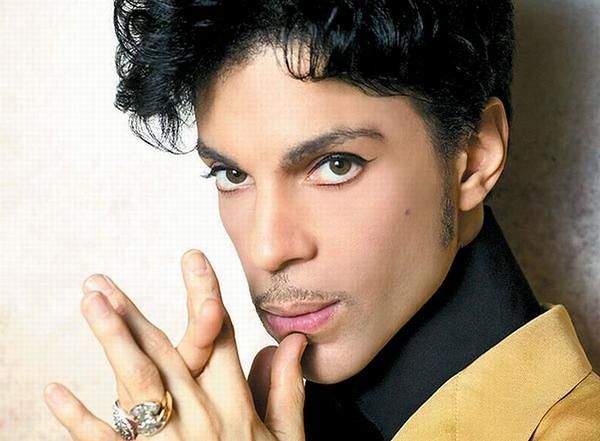
9. **The “Love Symbol” Era and the Battle for Artistic Control**
In 1993, a profound shift occurred in Prince’s public persona and career trajectory, driven by an escalating contractual dispute with Warner Bros. In an unprecedented move, Prince formally adopted the ‘Love Symbol’ as his stage name, a defiant act against the label’s perceived unwillingness to release his extensive backlog of music at a steady and rapid pace. This decision underscored his deep-seated frustration with the traditional music industry model, which he felt stifled his prolific creative output and limited his artistic freedom. His adoption of the symbol was a powerful statement of independence, signaling his determination to control his artistic legacy on his own terms.
The practical implications of this name change were immediately apparent, necessitating unique solutions for its use in print media. Warner Bros., in an effort to accommodate their artist, undertook the unusual step of organizing a mass mailing of floppy disks containing a custom font that allowed publications to render the unpronounceable symbol. During this period, Prince became widely referred to as ‘the Artist Formerly Known as Prince’ or simply ‘the Artist,’ a moniker that further emphasized his rebellion against conventional naming and branding. This era became synonymous with his fight for ownership and control over his musical catalog, a battle that would redefine the artist-label relationship for years to come.
Amidst this contractual tension, Warner Bros. released a comprehensive greatest hits compilation, *The Hits/The B-Sides*, in 1993. This three-disc set, also available as separate volumes (*The Hits 1* and *The Hits 2*), served as a powerful reminder of Prince’s unparalleled musical breadth and commercial impact. The collection not only featured the majority of his hit singles but also included several previously hard-to-find recordings, such as B-sides from across his career and unreleased tracks like the Revolution-recorded ‘Power Fantastic’ and a live rendition of ‘Nothing Compares 2 U’ featuring Rosie Gaines. These releases highlighted the extensive, unmined archive of his work, which was at the heart of his dispute with the label.
In 1994, Prince continued his strategic efforts to gain independence, allowing the single ‘The Most Beautiful Girl in the World’ to be released through a small, independent distributor, Bellmark Records. This move proved highly successful, with the song reaching No. 3 on the US Billboard Hot 100 and climbing to No. 1 in many other countries, demonstrating his ability to achieve commercial success outside the traditional major label framework. Subsequently, Prince intensified his efforts to fulfill his contractual obligations by releasing albums in quick succession. This included a limited official release of the previously aborted *Black Album*, which surfaced seven years after its initial recording, further illustrating the depth of his stored material.
His push for the simultaneous release of *Come* and *The Gold Experience* was a direct challenge to Warner Bros.’ market saturation concerns. While the label accepted both albums, they delayed *The Gold Experience*, a decision that Prince met with public protest, famously appearing with the word ‘slave’ written on his face. *The Gold Experience* was eventually released in September 1995 but faced printing limitations due to a plagiarism case related to ‘The Most Beautiful Girl in the World,’ though it saw streaming re-release in 2018 and physical reissues in 2022. The 1996 album *Chaos and Disorder* and *The Vault: Old Friends 4 Sale* (released in 1999) finally completed his contractual commitment, leading to Warner Bros. releasing him from his contract.
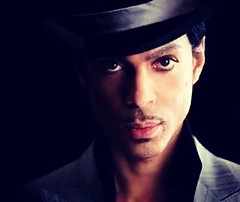
10. **Emancipation and the Dawn of Independent Distribution**
With the finalization of his contractual obligations to Warner Bros., Prince entered a new phase of unparalleled artistic freedom, eager to embark on a major comeback on his own terms. Later that year, he released *Emancipation*, an ambitious 36-song, three-CD set, with each disc precisely 60 minutes long. This monumental release was a clear declaration of his independence, signaling a prolific creative burst unhindered by corporate constraints. Released through his own NPG Records with distribution facilitated by EMI, this album was a bold statement of artistic self-determination, charting a new path for his career outside the traditional major label system.
*Emancipation* was met with significant commercial success, notably achieving Platinum certification by the RIAA, underscoring his undiminished appeal even after a period of high-profile disputes. This record also marked a departure in terms of its content, becoming the first Prince album to feature covers of other artists’ songs. Among these were Joan Osborne’s 1995 hit ‘One of Us,’ ‘Betcha by Golly Wow!’ (written by Thom Bell and Linda Creed), ‘I Can’t Make You Love Me’ (by James Allen Shamblin II and Michael Barry Reid), and ‘La-La (Means I Love You)’ (by Thom Bell and William Hart). Furthermore, for the publishing of *Emancipation*, Prince notably utilized ‘Emancipated Music Inc.’ (ASCAP) instead of ‘Controversy Music’ (ASCAP), which he had consistently used since 1981, symbolizing his complete break from past associations.
Continuing his independent streak, Prince unveiled *Crystal Ball* in 1998, a highly anticipated five-CD collection comprising previously unreleased material from his extensive archives. The distribution of this album, however, proved to be somewhat disorderly, leading to frustration among some dedicated fans who had pre-ordered the set on his website up to a year in advance. These pre-orders were eventually delivered months after the album had already gone on sale in retail stores. The retail edition itself comprised four discs, notably missing the *Kamasutra* disc that was part of the original five-disc concept, and was released in two different packaging editions, adding to the confusion.
Just three months after *Crystal Ball*, Prince released the *Newpower Soul* album, maintaining his prolific output. This period also saw him engage in significant collaborations that further promoted his NPG label and independent ventures. He contributed to Chaka Khan’s *Come 2 My House* and Larry Graham’s *GCS2000*, both released on the NPG label around the same time. These collaborations were actively promoted through live appearances on shows like *Vibe with Sinbad* and the *NBC Today show’s Summer Concert Series*, demonstrating Prince’s strategic use of media platforms to support his burgeoning independent empire and showcase the breadth of his creative partnerships.
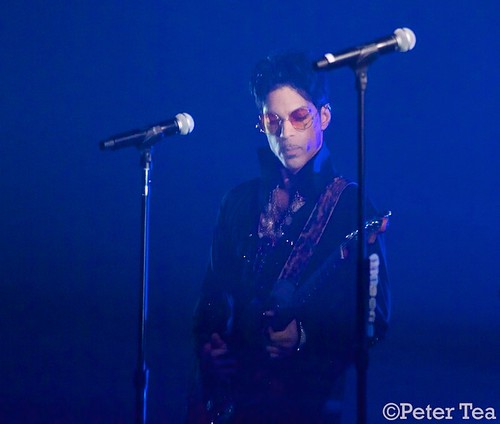
11. **A Return to “Prince” and Digital Pioneering**In 1999, Prince made a strategic move back into the major label fold, signing with Arista Records for the release of his new record, *Rave Un2 the Joy Fantastic*. This album marked a return to a more conventional distribution model after his independent ventures, yet Prince continued to explore innovative ways to engage with his audience. On December 31, 1999, he broadcast the pay-per-view concert *Rave Un2 the Year 2000*, a spectacular event compiled from footage of his December 17 and 18 concerts. The concert featured a star-studded lineup of guest musicians, including Lenny Kravitz, George Clinton, Jimmy Russell, and the original members of The Time, offering fans a grand celebration as the millennium approached, and was later released to home video.
In 1999, Prince made a strategic move back into the major label fold, signing with Arista Records for the release of his new record, *Rave Un2 the Joy Fantastic*. This album marked a return to a more conventional distribution model after his independent ventures, yet Prince continued to explore innovative ways to engage with his audience. On December 31, 1999, he broadcast the pay-per-view concert *Rave Un2 the Year 2000*, a spectacular event compiled from footage of his December 17 and 18 concerts. The concert featured a star-studded lineup of guest musicians, including Lenny Kravitz, George Clinton, Jimmy Russell, and the original members of The Time, offering fans a grand celebration as the millennium approached, and was later released to home video.
A significant and symbolic moment occurred on May 16, 2000, when Prince officially ceased using the Love Symbol as his stage name. This decision coincided with the expiration of his publishing contract with Warner/Chappell, marking a definitive end to the contractual disputes that had defined much of the preceding decade of his career. In a press conference, he eloquently stated his intention to revert to using his birth name, ‘Prince,’ articulating that he was now freed from the undesirable relationships and constraints that had become associated with the symbol. This change marked not just a return to his original name but a reclamation of identity and creative autonomy.
Despite reverting to his birth name, Prince continued to strategically employ the Love Symbol as a distinctive logo, integrating it into his album artwork and even designing a custom Love Symbol-shaped guitar for his performances. This demonstrated his ability to maintain elements of his artistic rebellion while re-establishing his public identity. Concurrent with this period, Prince became a pioneer in digital music distribution. For several years following the release of *Rave Un2 the Joy Fantastic*, he primarily released new music exclusively through his Internet subscription service, initially known as NPGOnlineLtd.com, which later evolved into NPGMusicClub.com. This forward-thinking approach allowed him direct access to his fanbase, bypassing traditional gatekeepers and showcasing his innovative spirit in leveraging technology for artistic dissemination.
This era of digital direct-to-fan engagement saw Prince release a steady stream of new material, underscoring his relentless creative drive. Albums from this period, largely distributed through his online platforms, include *Rave In2 the Joy Fantastic* (2001), *The Rainbow Children* (2001), *One Nite Alone…* (2002), *Xpectation* (2003), *C-Note* (2004), *The Chocolate Invasion* (2004), and *The Slaughterhouse* (2004). These releases not only showcased his diverse musical explorations but also solidified his reputation as an artist consistently pushing boundaries, both musically and commercially, by embracing new models for reaching his audience and maintaining control over his vast output.
Read more about: Joshua Abram’s Enduring Legacy: How a Visionary Reshaped Workspace, Advertising, and Fertility Care
12. **Resurgent Acclaim and Mainstream Re-engagement**
The early 2000s marked a period of significant critical re-evaluation and public re-engagement for Prince, as his extensive catalog continued to captivate audiences. In 2001, Warner Bros. released a second compilation album, *The Very Best of Prince*, which thoughtfully curated many of his most commercially successful singles from the 1980s, reintroducing his timeless hits to new and old fans alike. Building on this momentum, Prince released his first live album in 2002, *One Nite Alone… Live!*, a comprehensive three-CD box set featuring dynamic performances from his *One Nite Alone… Tour*. This set uniquely included a disc of ‘aftershow’ music entitled *It Ain’t Over!*, offering an intimate glimpse into his spontaneous and captivating post-concert sessions. These releases underscored his commitment to both his recorded and live artistry, further solidifying his legendary status.
During this time, Prince made concerted efforts to foster a more direct and effective connection with his dedicated fan base. He actively utilized the NPG Music Club, provided exclusive pre-concert sound checks, and hosted yearly ‘celebrations’ at Paisley Park, his renowned music studios. These events were designed as unique opportunities for fans, who were invited into the studio for tours, interviews, discussions, and intimate music-listening sessions. The depth of this fan engagement was further highlighted by the filming of some of these fan discussions for an unreleased documentary, directed by Kevin Smith, showcasing Prince’s innovative approach to community building and transparency with his most ardent supporters.
A pivotal moment of mainstream resurgence occurred on February 8, 2004, when Prince made a show-stopping appearance at the 46th Annual Grammy Awards alongside Beyoncé. Their electrifying performance, which opened the ceremony, featured a medley of Prince’s iconic hits ‘Purple Rain,’ ‘Let’s Go Crazy,’ and ‘Baby I’m a Star,’ seamlessly blended with Beyoncé’s ‘Crazy in Love,’ captivating a global audience and reaffirming his unparalleled showmanship. The following month, Prince received another prestigious honor, his induction into the Rock and Roll Hall of Fame. The award was presented to him by Alicia Keys, accompanied by Big Boi and André 3000 of OutKast, acknowledging his profound and lasting influence on music. Beyond performing a trio of his own hits, Prince delivered a memorable two-minute guitar solo during a tribute to fellow inductee George Harrison’s ‘While My Guitar Gently Weeps,’ widely hailed as one of the ceremony’s most iconic moments. He also contributed to the album *Power of Soul: A Tribute to Jimi Hendrix*, performing ‘Red House’ as ‘Purple House,’ further cementing his status as a guitar virtuoso.
In April 2004, Prince released *Musicology* through a strategic one-album agreement with Columbia, an album that immediately climbed into the top five on international charts, including the US, UK, Germany, and Australia. Its notable US chart success was partly attributed to an innovative distribution strategy where CDs were included as part of concert ticket purchases, effectively qualifying each CD toward chart placement under then-existing rules. This approach proved highly effective, propelling the album to widespread commercial success. Just three months later, *Spin* magazine lauded him as the greatest frontman of all time. That same year, *Rolling Stone* magazine named Prince the highest-earning musician in the world, with an annual income of $56.5 million, largely a result of his immensely successful *Musicology Tour*, which Pollstar identified as the top concert draw among musicians in the US, featuring 96 concerts with an average ticket price of US$61 (equivalent to $102 in 2024). *Musicology* garnered two Grammy Awards: Best Male R&B Vocal Performance for ‘Call My Name’ and Best Traditional R&B Vocal Performance for its title track, with additional nominations for Best R&B Song, Best R&B Album, and ‘Cinnamon Girl’ for Best Male Pop Vocal Performance. *Rolling Stone* further recognized his lasting impact by ranking Prince No. 27 on their comprehensive list of the 100 Greatest Artists of All Time.
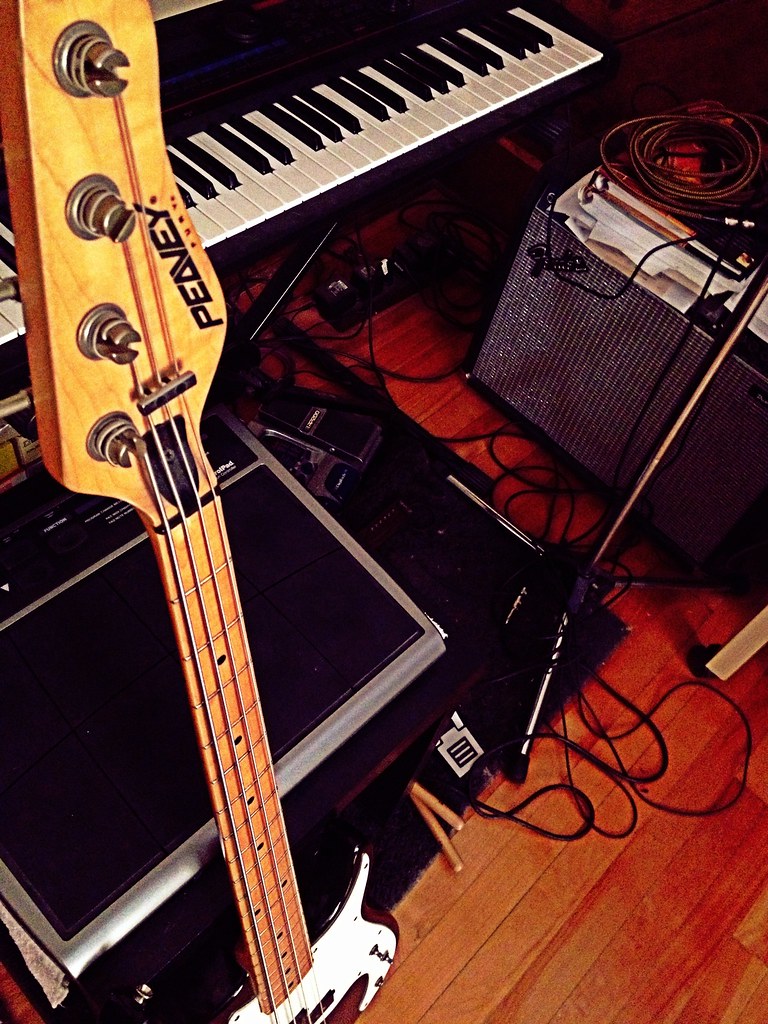
13. **The Later Years: Continued Innovation and Final Chapter**
Prince’s influence and collaborative spirit continued unabated into the mid-2000s, demonstrating his enduring relevance and the respect he commanded from his peers. In April 2005, he lent his distinctive guitar talents, alongside En Vogue’s backing vocals, to Stevie Wonder’s single ‘So What the Fuss,’ marking Wonder’s first single release since 1999. This collaboration underscored Prince’s willingness to engage with other musical legends, reaffirming his position as a sought-after artist whose contributions elevated any project. It was a subtle yet powerful testament to his sustained musical prowess and his quiet but impactful presence within the industry.
Building on this momentum, Prince signed with Universal Music in late 2005, leading to the release of his highly anticipated album, *3121*, on March 21, 2006. The album’s lead single, ‘Te Amo Corazón,’ featured a visually stunning video directed by actress Salma Hayek, filmed against the exotic backdrop of Marrakech, Morocco, and starring Argentine actress and singer Mía Maestro. The subsequent single, ‘Black Sweat,’ also received critical attention, with its video earning a nomination at the MTV VMAs for Best Cinematography. These releases highlighted Prince’s continued commitment to visual artistry alongside his musical innovations, ensuring a multi-sensory experience for his audience.
The immediate and resounding success of *3121* marked a significant milestone in Prince’s career, as it became his first album to reach No. 1 on the Billboard 200 since the monumental *Purple Rain*. This achievement underscored his enduring capacity to connect with a broad audience and maintain commercial dominance after years of artistic experimentation and independent releases. Over the decade preceding his passing, an impressive six of his albums notably entered the U.S. top 10 charts, a testament to his consistent quality, prolific output, and unwavering popular appeal. This sustained commercial viability demonstrated that his innovative spirit resonated strongly with listeners, regardless of his shifting artistic and distribution strategies.
Tragically, this extraordinary journey of musical innovation and entrepreneurial spirit came to an unexpected end on April 21, 2016. At the age of 57, Prince Rogers Nelson died after accidentally overdosing on fentanyl at his beloved Paisley Park home and recording studio in Chanhassen, Minnesota. His passing sent shockwaves through the music world and beyond, marking the somber conclusion of a life dedicated to pushing artistic boundaries. The abruptness of his death left millions mourning the loss of a true musical genius, whose influence was felt across genres and generations, leaving an irreplaceable void in the tapestry of contemporary music.
Read more about: Unleash the Beasts: The Most Popular Classic Muscle Cars That Defined the ’60s and ’70s Golden Era

14. **An Undying Legacy: Global Impact and Posthumous Treasures**
Prince’s unparalleled career firmly established him as one of the best-selling music artists of all time, with global record sales exceeding 100 million. His extraordinary contributions to music were recognized with a plethora of prestigious awards throughout his lifetime, including the Grammy President’s Merit Award, the American Music Awards for Achievement and of Merit, the Billboard Icon Award, an Academy Award, and a Golden Globe Award. These accolades are a testament to his profound impact across various facets of the entertainment industry, from groundbreaking musical compositions to captivating film performances. His ability to consistently deliver critically acclaimed and commercially successful work across decades solidified his status as a true global icon, admired for both his artistry and business acumen.
His lasting influence is further underscored by numerous inductions into revered institutions that celebrate musical excellence. Prince was inducted into the Rock and Roll Hall of Fame in 2004, the UK Music Hall of Fame in 2006, and the Rhythm and Blues Music Hall of Fame in 2016. In a rare and fitting recognition of his diverse heritage and impact, he was inducted twice into the Black Music & Entertainment Walk of Fame in 2022. These multiple honors reflect the widespread and enduring acknowledgment of his genre-defying music and his pioneering role in shaping contemporary culture, cementing his place in the pantheon of all-time greats.
Prince was a prodigious and prolific musician whose creative output during his lifetime was staggering, encompassing 39 studio albums. Estimates of the complete number of songs he wrote range anywhere from 500 to well over 1,000, showcasing a boundless wellspring of creativity. His unique approach often involved performing all or most of the instruments on his recordings, crafting the distinctive ‘Minneapolis sound’ that seamlessly blended funk, disco, R&B, rock, new wave, soul, synth-pop, pop, jazz, blues, and hip hop. This incredible volume and diversity of work highlight his singular dedication to his craft and his unparalleled versatility as an artist, musician, and producer.
Beyond his officially released catalog, Prince left behind a vast and legendary array of unreleased material, securely housed in a custom-built bank vault located beneath his Paisley Park home and recording studio. This fabled archive contains fully completed albums and over 50 finished music videos, a treasure trove that continues to captivate fans and scholars alike. Since his passing, numerous posthumous collections of his previously unheard work have been meticulously issued by his estate, continuing to enrich his already monumental artistic catalog and offering new insights into his genius. This steady unveiling of his vault’s contents ensures that his creative legacy will continue to unfold and inspire for generations to come, revealing the depth of his foresight and the extent of his musical contributions.
In reflection, Prince Rogers Nelson’s journey was more than that of a musician; it was a testament to the power of artistic independence, relentless innovation, and uncompromising vision. From his audacious battles for creative control to his pioneering efforts in digital distribution, he consistently challenged industry norms, redefined what an artist could achieve, and left an indelible mark on the global cultural landscape. His flamboyant persona, extraordinary vocal range, multi-instrumental mastery, and genre-bending music continue to resonate, reminding us of a singular talent who lived and breathed art, forever shaping the sound and spirit of popular music and inspiring countless artists to forge their own path.


